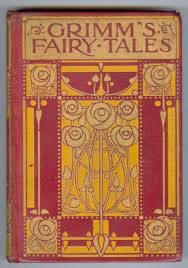For reasons I cannot explain, I chose to commute to Pratt instead of living in the dorm there, and that cost me many stuggles wih time and energy. I rose every morning at 7:00, feeling groggy, and went to the Long Island Rail Road station in Merrick, going to the Atlantic Avenue station in Brooklyn, and from there by subway to Pratt.
I realized later that my fellow students could not only have had a more leisurely morning of breakfast and preparing for the day, but could, the previous night, have eaten dinner at the same time I was sitting on the LIRR train, attempting to either 1) do some homework, or, more likely, 2) sleep, until arriving at Merrick Station. On the class schedule that first year, Art History was taught on Monday nights in Memorial Hall , a darkened auditorium which, when the lights were out and slides were being shown, induced one to want to sleep. This class did not end at 4 PM the way many other classes did, but went on till 5 PM (or maybe even later.) I then had to get on back to Atlantic Avenue station and make my way home to Merrick, there to have dinner and go back down into my "studio" (a former coal storage room in our cellar, where during the 1940s, the coal was deposited via a chute that poured it from a truck down through a small cellar window.) My father had outfitted the room for me with a long work table and a desk that had belonged to someone in the family. I was quite happy with it. But the problem was the lack of sleep and the fear that I couldn't measure up to many of the demands of the art school and its high standards (which I should have--and probably do--appreciate, but the stresses made life really difficult.) And during that first year, I willingly stayed up all night, every single Thursday night, in order to try to pull all efforts together in order not to flunk the class that happened Friday mornings.
More about Pratt that first year: "discouraging remarks by teachers" and "encouraging remarks by teachers." I suppose in the adult phase of life one must supply both of these for oneself but for me at that time the olive branch of the second category was what I needed. One day a teacher actually said to me, "It's always darkest before the dawn"...a really kind person was she. But I would like to offer here the two most outstanding of the discouraging and the encouraging sorts: the first by a well-regarded figure-drawing teacher who, after looking over my shoulder at the charcoal drawing on newsprint (the standard medium in the Pratt classes) leaned over and said , "You can't draw." Then at the end of that freshman year, we had to show our portfolio of work to the Chairman of Graphic Arts & Illustration, who was the artist Fritz Eichenberg. And when I showed him my work, telling him the "I can't draw" comment and that I was worried, he said, so very nicely, "But your work has the illusion of life", putting me back on the road ahead, with optimism.
Here is something about Eichenberg from Sacred Art Pilgrim, John A. Kohan
http://sacredartpilgrim.com/collection/view/19
Fritz Eichenberg
(1901-1990)
Fritz Eichenberg liked to point out that his German last name meant “oak mountain,” as if this, somehow, explained his extraordinary mastery of the medium of wood engraving. In a creative lifetime dedicated to graphics, Eichenberg occasionally experimented with lithographs and linocuts but always felt most inspired with a graver in hand, creating meticulous white-line prints from wooden panels, preferably, made from endgrain boxwood.
He was a visual artist whose work was inextricably bound up with words in hundreds of illustrations for books and periodicals. In a 1976 self-portrait titled Dream of Reason, the artist sleeps over an open volume, engraving tool in hand, while the ghosts of all the authors whose writings he illustrated--Fyodor Dostoyevsky, Desiderius Erasmus, Charlotte Bronte, Edgar Allen Poe, Leo Tolstoy, Ivan Turgenev--peer expectantly over his shoulder.
As a student of Russian Literature, I came to know Eichenberg’s art long before I knew anything about the artist, discovering his marvelous prints in the pages of classic 19th Century Russian novels like Dostoyevsky’s Crime and Punishment and The Brothers Karamazov or Tolstoy’s Resurrection. Eichenberg had this uncanny ability to pin down the elusive Russian soul in a pictorial style best described as expressionistic realism. The backgrounds in Eichenberg's illustrations were always full of persuasive period details, yet the figures seemed wonderfully theatrical and dramatically highlighted. I loved the faces most of all. They had the ascetic beauty of icons.
As a student of Russian Literature, I came to know Eichenberg’s art long before I knew anything about the artist, discovering his marvelous prints in the pages of classic 19th Century Russian novels like Dostoyevsky’s Crime and Punishment and The Brothers Karamazov or Tolstoy’s Resurrection. Eichenberg had this uncanny ability to pin down the elusive Russian soul in a pictorial style best described as expressionistic realism. The backgrounds in Eichenberg's illustrations were always full of persuasive period details, yet the figures seemed wonderfully theatrical and dramatically highlighted. I loved the faces most of all. They had the ascetic beauty of icons.
And the following about Eichenberg is from the blog, Victorian Gothic:
"In
the introduction to Eichenberg’s retrospective, The Wood and the Graver, Alan Fern wrote:
'It is given to only a few illustrators to create images that so exactly suit the text with which they are working that their pictures fuse with the author’s words. Tenniel’s Alice in Wonderland is one of these rare cases. Eichenberg’s Wuthering Heights may possibly be another. Having seen his Heathcliff, I, at least, cannot imagine him any other way.' "
Wuthering Heights, cover illustration:
And again from Alan Fern: "Eichenberg was able to achieve this effect, in no small part,
because he clearly took the time to understand and appreciate the literature he
was illustrating. His images do not merely portray the events of the story; they
capture its spirit."
Jane Eyre, cover illustration:
I am so glad to have both of these books: Charlotte Bronte's Jane Eyre and Emily Bronte's Wuthering Heights, with wonderful illustrations by Fritz Eichenberg.. The books belonged to my mother, and were published by Random House in 1943. The covers pictured above are Eichenberg's wood engravings, which are also found plentifully throughout each of the two books.




































